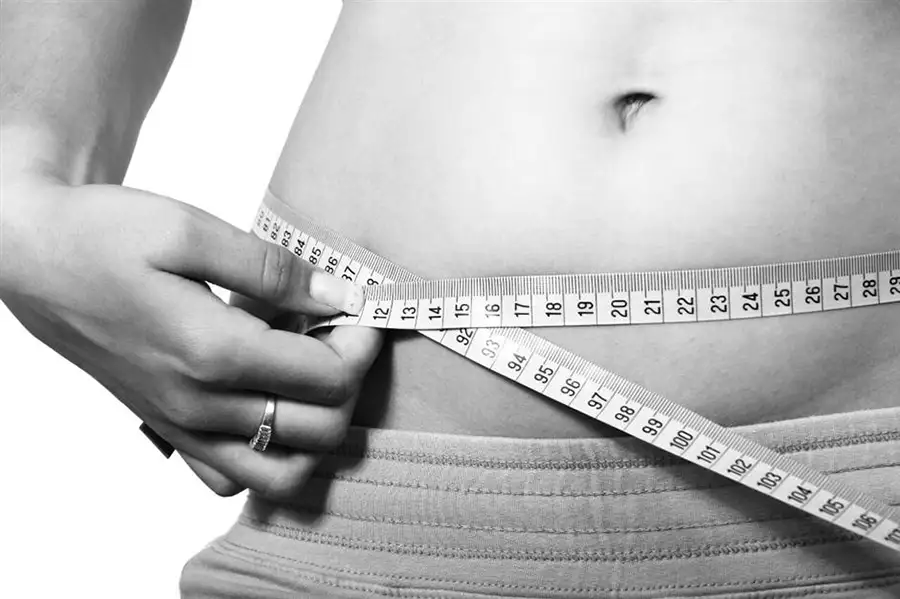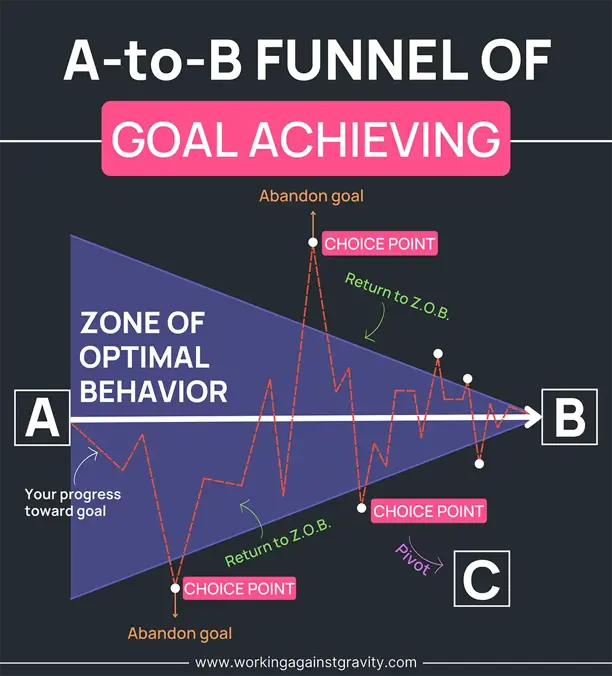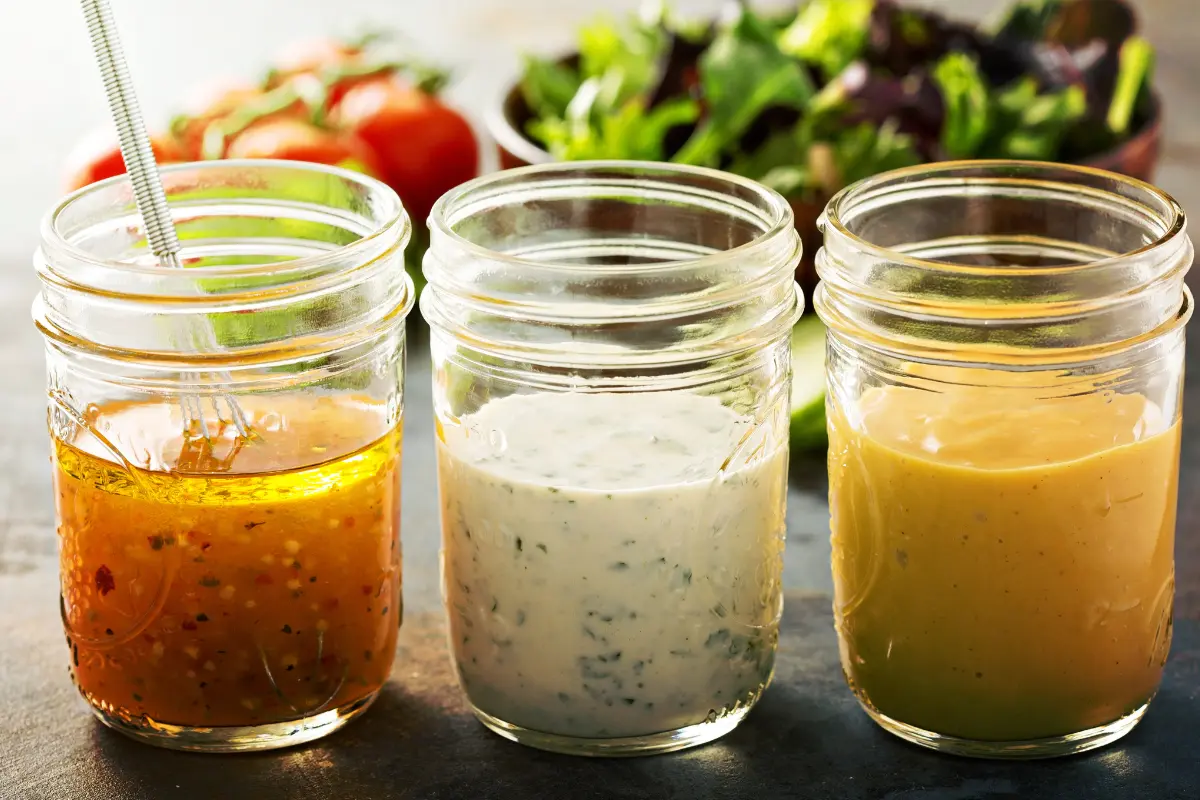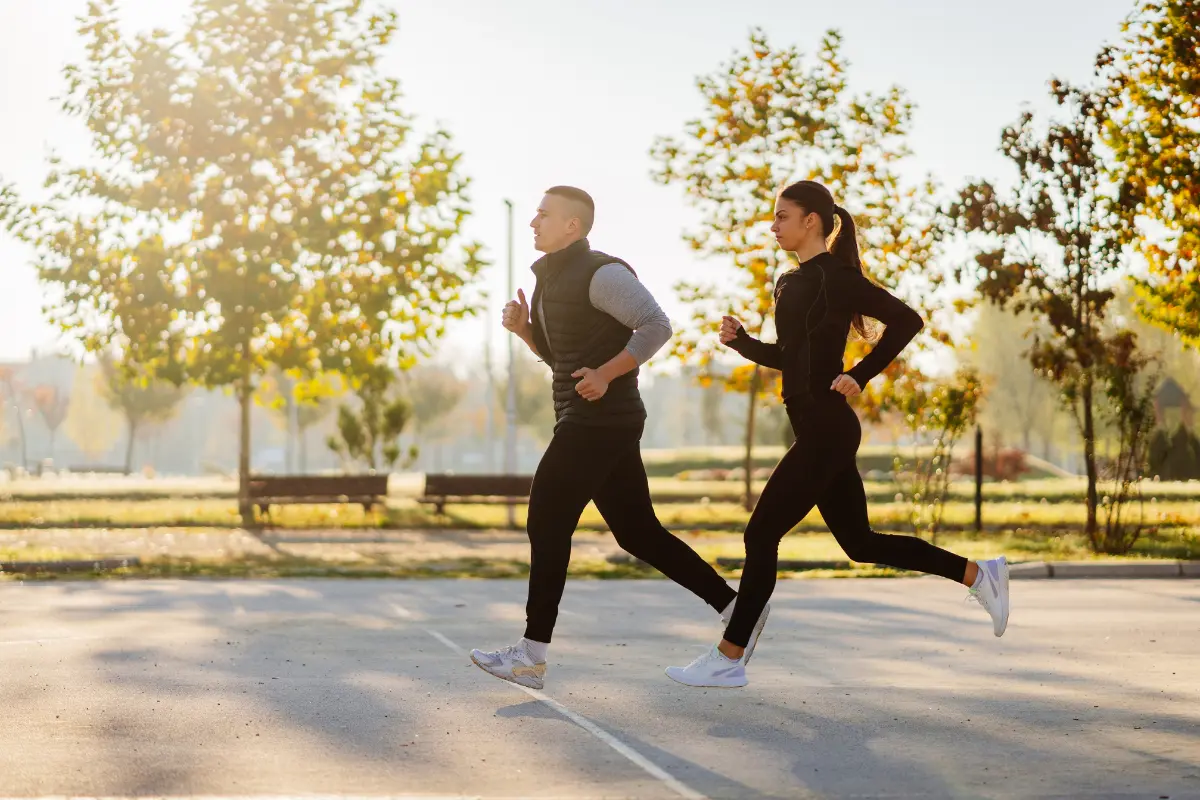
What does it really take to get lean or reach your health and body composition goals?
At WAG Nutrition Coaching, we’ve worked with thousands of clients and have noticed that many members experience fantastic progress with a few small lifestyle changes. However, most people reach a point where they feel stuck and are unable to take their progress to the next level. “I’ve been keeping up with my habits and changes,” these clients say, “But I’ve plateaued.”
For example, perhaps you started paying attention to your food intake for the first time by tracking it in apps like MacrosFirst or MyFitnessPal. Chances are, this change alone will help you make significant progress because it helps you become aware of how many calories you consume daily and the macronutrient makeup of those calories.
But you may get stuck after a few weeks or months of tracking your food. The scale may stop moving, and you may stop seeing changes in the mirror week-to-week.
You may ask, "What now?" "Why isn’t it working anymore?" or "What does it take to reach my weight loss goals?"
Advertisement
The reality is that the habits and lifestyle changes that took you this far may not be sufficient to help you reach your ultimate health and fitness destination.
The leaner you get, the more challenging it becomes to get even leaner. You may need to adopt new habits you haven’t yet been practicing or dial in your current habits more precisely.
Today, we’ll outline the changes you will likely need to move from your current position (let’s call that “Point A”) to your desired destination (“Point B”).
The A to B Model
So what must you do to get from Point A to Point B? We have a helpful tool that can help, called (big surprise!) the A to B Model.
Between A and B, a funnel starts quite wide at “A” and gets narrower as it gets closer to B. Within this funnel is the “Zone of Optimal Behavior.”
Advertisement
The Zone of Optimal Behavior is where your actions and behaviors align with your goal. The zone starts off broad, with room for flexibility and mistakes, but it becomes narrower as you get closer to your goal.

Here is one example of the model at work:
Imagine you’re a child, and your dream is to qualify for the National Basketball Association (NBA).
Using the A to B Model, “A” is where you are a young kid who loves playing basketball. You’re learning to dribble, catch, and pass a ball. The basics. You’re having fun, and there is no pressure involved.
Advertisement
As time passes, things get a little more serious. You understand winning and losing. You know you need to play well to win or even be invited to play on a team. The skills you need to have are becoming clear and the Zone of Optimal Behavior gets narrower. You need to learn more about offense and defense. You need to improve how often you sink a ball and score a point. You need to start practicing specific drills to get better at playing the game.
Now you’re in high school, and things are getting more competitive. You have developed a passion for the sport and a dream to play at the college level, as have many other players. Now, you need to begin working out because your physical fitness and strength greatly impact your basketball success and can set you apart from your competitors.
The goal of playing college basketball is now in sight—and so are the requirements held by the colleges you want to play for. You may need certain grades to get into a great school on top of all your other basketball-related responsibilities, like training and nutrition. This means that all basketball and no study isn’t an option. The Zone of Optimal Behavior to reach your “B state” just narrowed again.
Once you’re at the college level, your sights are set on the NBA, and your personal life is taken into account. You need to be a great role model and a team player.
Life looks much different now as you get closer to Point B than it did at Point A.
Advertisement
During this journey, there will be “Choice Points.” These are times when we must decide: Do we stay within the Zone of Optimal Behavior and continue working toward our goal? Or do we exit and abandon attacking B entirely?
Reading the descriptions below of the behavior and lifestyle changes needed to achieve each stage of leanness might be a “choice point” for you. You might decide that your original Point B of achieving six-pack abs and a super-lean, ripped physique is no longer your ideal destination. The point of this article is that there is no right or wrong answer when determining what Point B is for you. It is all about deciding what is realistic and doable with your circumstances—it is key to ask yourself: are the tradeoffs and costs worth the outcome?
Body Composition vs. Scale Weight
Which is more "accurate"? The weight you see on the scale or visible changes in body composition (i.e. progress photos, measurements, and how your clothes fit?)?
Before discussing the lifestyle and habit changes needed to reach each stage of leanness, it is important to explain why we refer to “body composition” as opposed to a certain number on the bathroom scale.
While the scale will tell you how much you weigh, it doesn’t tell you what your body is made of. Body composition refers to everything in your body, including muscle, organs, bones, and fluid.
Advertisement
Many people who embark on an exercise and nutrition regimen feel frustrated if they change some habits and then step on the scale only to see that their body weight hasn’t changed.
But consider this: if you begin exercising and gain a pound of muscle while also losing a pound of body fat, your scale weight will not have changed—but your body composition will look much different (and chances are, you will like the results!).
At WAG, we use average weekly body weight changes to help assess progress. However, we also use other progress indicators (more on that below).
The main point about scale weight is that if you want to get leaner, it is not the best idea to rely on it alone. The number on the scale tells only a small part of the story about how your body is changing.
How Do You Measure Your Body Fat Percentage?
Now that we have established the importance of determining our body composition, the next question is: How do we determine what that is? How do we know how much body fat we have compared to muscle?
Advertisement
There are many ways to determine this, some more accurate than others. We will outline some of the most commonly used methods below.
1. Bioelectrical Impedance Analysis (BIA)
One common and popular way to measure body fat percentage is BIA. This method is used in devices such as the InBody machine, which is featured in many gyms. BIA devices detect how your body responds to small electrical currents by placing electrodes on your skin. The BIA device enters your body’s response to the electrical currents into an equation that predicts your body composition.[1]
BIA has advantages and disadvantages. On the positive side, it is quick, easy, and widely accessible.
However, the accuracy of these devices varies widely and can be significantly affected by food and fluid intake.[2]
If you do use one of these devices, it is critical to ensure that the testing conditions are the same each time. For example, take the test at the same time of day each time you do it (preferably first thing in the morning). Avoid drinking fluids or consuming food before the test, and wear the same clothing each time.
Advertisement
2. Dual-energy X-ray Absorptiometry (DEXA)
The DEXA scan is another method of testing body composition that is more difficult to find but more accurate than BIA. DEXA uses X-rays of two different energies to estimate your body fat percentage. DEXA also assesses bone density and provides detailed information about the bone, lean mass, and fat in each region of your body.
The main advantage of DEXA is that it is more accurate (the error rate is 1.5–2.5% body fat, as opposed to a handheld BIA device, which could be off by 8–10%).[3,4]
DEXA also offers more detailed information than BIA. Unfortunately, DEXAs are often unavailable to the general public and can be expensive.
3. Body Circumference Measurements and Photos
At WAG, we ask clients to take progress photos weekly. Progress photos are a great way to get a “big picture” look at the changes in your body composition. Since we all look at ourselves in the mirror daily, it can be tough to notice changes as they happen. Taking photos can help you (and your coach!) see changes over weeks and months.
For example, perhaps, in a given month, you didn’t see many changes in your scale weight—but when you compared side-by-side photos, you realized there was more muscle definition in your shoulders and quads! This is a sign that your body composition is changing. Perhaps the scale did not change because you gained muscle and lost approximately the same body fat. Gram for gram, fat takes up more space than muscle.[5]
Advertisement
WAG coaches also ask clients to take weekly measurements of their chest, waist, and hips. Measure changes can be a good indicator that you are losing body fat. For example, decreases in waist circumference are typically a sign that you are losing abdominal fat.[6]
We have found that combining measurements, progress photos, and the average trend of a client’s body weight (rather than the daily scale weights) is a great way to assess overall body composition progress.
So, if you do not have access to some of the “fancier” methods of testing described above, that’s okay! You can still keep an eye on how your body is changing. Below, we will also describe how various body fat percentages look and feel, which will help you gauge which one describes your current status.
Now, let’s examine the habits and lifestyle required to move from where you are now (“A”) to where you want to go (“B”).
Advertisement
Level 1 – No Muscle Definition / Heading Toward Obesity
Body fat percentage:
- Men > 20%
- Women > 30%
What does this look and feel like?
For men: Being 20 to 24 percent body fat likely means your abs will not be visible. When males reach 25 to 29 percent body fat, this level is considered obese.
For women: 30–34 percent body fat indicates you’re heading toward obesity. At this level, you will have no visible abdominal muscles and may not feel great.
A body fat percentage of 35 or more is a “red flag” and makes you a higher-risk candidate for diabetes and/or heart disease in the future.
For both men and women, these body fat ranges are characterized by low energy levels, poorer life expectancy, and the risk of metabolic syndrome.[7]
Level 1 Necessary Habits and Lifestyle:
- Begin becoming aware of your food intake. For example, learn how to track food in an app or use your hand to measure appropriate portion sizes.
- Exercise 15–30 minutes daily, most days per week, at any intensity level.
- Consume a source of protein with each main meal.
- Begin reducing overall consumption of processed foods and foods with added sugar.
- Eat more high-fiber foods, including fruits and vegetables.
- Reduce your intake of alcoholic and other caloric beverages.
- Begin reducing the number of meals you eat per week at restaurants. Prepare more meals at home.
- Drink at least half your body weight in ounces of water daily.
- Get at least seven hours of sleep per night.
Level 2 - Average Leanness
Body fat percentage:
- Men: 15–20%
- Women: 25–30%
What does this look and feel like?
For both men and women: You will look healthy but not super lean. Your body likely has a softer look. You may not have much excess fat, but your definition may be minimal.
Advertisement
This is on the higher side of what is considered “average” regarding body fat levels.
Although these body fat percentages are not necessarily bad, they may cause attention and some lifestyle changes with nutrition and exercise.
Being in this body fat range requires more thought and planning than the one described above, but there are many benefits, such as improved health, energy, and sleep. You may also find that exercise is easier and more enjoyable.
Level 2 Necessary Habits and Lifestyle:
- If you are maintaining this level of leanness, track food in an app 60–70 percent of the time. Some people at Level 2 may not need to track food at all once they have developed sustainable habits and a solid awareness of portion sizes.
- If you are striving to achieve this level of leanness, you may need to track food 80–85 percent of the time, at least for a period of time.
- Exercise at least 30 minutes per day, most days per week, at any intensity level.
- Consume a source of protein in each main meal.
- Reduce your overall consumption of processed foods and foods with added sugar.
- Consume a vegetable with each main meal.
- No more than five alcoholic drinks or caloric beverages per week.
- Eat out at restaurants and/or away from home no more than four or five times per week.
- Drink at least half your body weight in ounces of water daily.
- Get at least seven hours of sleep per night.
Level 3 - Healthy and Fit
Body fat percentage:
- Men: 12–15%
- Women: 22–24%
What does this look and feel like?
For both men and women: Some abs will be visible. You will likely see upper abdominal definition and some external obliques, but the definition is minimal, and the lower half of the abdominals are typically not defined. On the rest of the body, the outlines of muscles can be seen, but there is usually no clear separation between them.
Advertisement
For women specifically: You will definitely see some of your natural curves in your hips, with more fat in the buttocks and thighs.
This range is considered relatively easy to maintain compared to the lower ranges. From a health perspective, most people will be able to reduce or eliminate many medications.
However, this body fat range requires some planning and minor social sacrifices.
Level 3 Necessary Habits and Lifestyle:
- If you are maintaining this level of leanness, track food in an app at least 70–75 percent of the time.
- If you are striving to achieve this level of leanness, you may need to track food 85–95 percent of the time, at least for a period of time.
- When tracking food, weigh at least 75–80 percent of the food on your scale in grams or ounces.
- Exercise at least 30–45 minutes per day, five to six days per week.
- At least 80–85 percent of your diet comes from whole, unprocessed foods.
- No more than three or four alcoholic drinks per week.
- When tracking, hit macros in the range of +/- 5 grams of carbs and protein and +/- 2 grams of fat 85–90 percent of the time.
- Eat out at restaurants and/or away from home no more than two to four times per week.
- Drink at least half your body weight in ounces of water daily.
- Get at least seven hours of sleep per night.
- Begin learning and practicing stress management techniques.
Level 4 - "Beach Body"
Body fat percentage:
- Men: 9-11%
- Women: 19-21%
What does this look and feel like?
For men: This is a sustainable level at which you should be able to see your abs, but they will likely not be as defined as those of a man in the 6–7% body fat range.
Advertisement
This body fat range is the classic “beach body look” that many men want. While not very defined, there is a separation between muscles, some muscle striations potentially in the shoulders or arms, but striations are not showing on every muscle. Vascularity is typically limited to the arms, with a little possibility on the legs.
For women: This body fat percentage is usually in the “fit” category of most body fat charts and is typical of many female athletes. Some definitions in the abs are apparent, and there is body fat on the arms and legs, but it’s not too pronounced. There is minimal but some separation between muscles.
The benefits of these body fat levels generally include a fit appearance, more energy, and good overall health for both men and women. And they should be relatively easy to maintain once your habits are consistently part of your lifestyle.
Reaching these body fat levels will require more attention to diet and exercise regimens than the levels described above, so there may be some sacrifices regarding your social life and time.
Level 4 Necessary Habits and Lifestyle:
- Track food at least 80 percent of the time if you are maintaining this level of leanness.
- If you are striving to achieve this level of leanness, you may need to track food 90–95 percent of the time, at least for a period of time.
- When tracking food, weigh at least 80–85 percent of the food on your scale in grams or ounces.
- Exercise at least 60 minutes daily, five to six days weekly.
- At least 80–85 percent of your diet comes from whole, unprocessed foods.
- No more than two alcoholic drinks per week.
- When tracking, hit macros in the range of +/- 5 grams of carbs and protein and +/- 2 grams of fat 85–90 percent of the time.
- Eat out at restaurants and/or away from home no more than twice weekly.
- Drink close to 1 ounce of water per pound of body weight daily.
- Get at least seven and a half hours of sleep per night.
- Spend 10–15 minutes daily practicing stress management or mindfulness.
Advertisement
Level 5 - Fitness Model Lean / Six-Pack
Body fat percentage
- Men: 6–8%
- Women: 16–18%
What does this look and feel like?
For men: Although this body fat range is less extreme than that of competition bodybuilders, it’s still a level that is not sustainable long-term for most men. Around this level, your friends and family may notice you looking more “gaunt” in the face.
Many male fitness models achieve This body fat level when doing photoshoots. It is characterized by muscle definition in all muscles and clear vascularity in most muscles, including arms, legs, and abs. Vascularity over the abs muscle is a sign of very low body fat. There is a clear separation of the muscles.
For women: This is also considered a very low body fat percentage. Many bikini and fitness models will reach this body fat level, and some may not be able to menstruate.
Women will see muscle definition in their abs, legs, arms, and shoulders. There may also be some vascularity and separation between the muscles. Because of their low body fat, women’s hips, buttocks, and thighs may have a little less shape.
Both men and women may achieve a six-pack at this level of leanness.
Advertisement
Level 5 Necessary Habits and Lifestyle:
- Track food 85–90 percent of the time when working to achieve this level of leanness (less frequent tracking may be required for maintaining this leanness).
- When tracking your food, weigh 90 percent of the food on your scale in grams or ounces.
- Exercise at least 60–75 minutes daily, six days per week.
- 85–90 percent of your diet comes from whole, unprocessed foods.
- Fewer than three alcoholic drinks per month.
- When tracking, hit macros in the range of +/- 5 grams of carbs and protein and +/- 2 grams of fat 90–95 percent of the time.
- Eat out at restaurants and/or away from home twice a month or less.
- Drink at least 1 ounce of water per pound of body weight daily.
- Get at least eight to nine hours of sleep per night.
- Spend at least 20 minutes per day practicing stress management or mindfulness.
Special Considerations:
- You may struggle to attend social situations where food is offered. You may need to bring your own food or use your food scale to weigh food at social events.
- Reaching this level of leanness will require a lot of time to weigh and measure most of your food.
- You will need to block off time each week for meal preparation (and/or you may need to order some pre-made meals).
Level 6 - Extremely Lean
Body fat percentage:
- Men: < 6%
- Women: < 15%
What does it look and feel like?
These are extremely low body fat levels.
For men: When preparing for bodybuilding competitions, bodybuilders can drop to as low as 3–4% body fat. This body fat level is characterized by extreme vascularity, so veins are visible over just about every muscle in the body. There is a clear separation between muscles; striations are visible on almost every muscle. Essential fat for a man is around 2%, which is the basic amount of fat a man needs for the body to function (fat protects internal organs in the chest and abdomen).
For women: This is the extremely low body fat level typically attained by female figure competitors and bodybuilders. Essential fat for women is around 8–10% compared to 2% for men. Why the difference? Women have more fat in breast tissue and the area surrounding the uterus.
Although some people might feel pride at achieving this low level of body fat for a specific situation (like a bodybuilding competition), these levels are not considered safe or healthy. Women will be unable to menstruate. Separation between muscles and clear vascularity are noticeable at this level.
Level 6 Necessary Habits and Lifestyle:
- Track food 95–100 percent of the time.
- Weigh out all food on your food scale in grams or ounces.
- Exercise at least 75–120 minutes daily, six to seven days per week.
- 90–95 percent or more of your diet comes from whole, unprocessed foods.
- Fewer than one alcoholic drink per month.
- When tracking, hit macros in the range of +/- 5 grams of carbs and protein and +/- 2 grams of fat 95–100% of the time.
- Eat out at restaurants and/or away from home twice a month or less.
- Drink at least 1 ounce of water per pound of body weight daily.
- Get at least nine hours of sleep per night.
- Spend at least 20 minutes per day practicing stress management or mindfulness.
Special Considerations:
- You may struggle attending social situations where food is offered—you must bring your food and avoid eating food you cannot weigh and track.
- Reaching this level of leanness will require a lot of time devoted to weighing and measuring every gram of food—for some people, this can lead to disordered eating.
- You will need to block off time each week for meal preparation (and/or you may need to order some pre-made meals).
- You may feel fatigued and experience hormone imbalances due to very low body fat levels.
Which Leanness Level is Right For You?
There is no right or wrong answer. The right answer for you requires taking an honest look at your goals and expectations and ensuring they are aligned with the day-to-day things you are willing and able to do.
Advertisement
To continue getting leaner, it’s not simply about maintaining the same set of habits and watching your body continue to change. Getting leaner is challenging; the leaner you get, the more consistency, precision, and effort are required.
WAG Nutrition Coaches have helped thousands of people with their body composition and performance and undergo continued learning to ensure they are ready to help you reach your goals - especially the more complicated ones. They'll get to know you, your lifestyle, and your unique needs and create results that you can sustain long-term.
References:
References:
- Khalil, S. F., Mohktar, M. S., & Ibrahim, F. (2014). The theory and fundamentals of bioimpedance analysis in clinical status monitoring and diagnosis of diseases. Sensors (Basel, Switzerland), 14(6), 10895-928. doi:10.3390/s140610895.
- Talma, H. , Chinapaw, M. J., Bakker, B. , HiraSing, R. A., Terwee, C. B. and Altenburg, T. M. (2013), Bioelectrical impedance to estimate body fat. Obes Rev, 14: 895-905. doi:10.1111/obr.12061
- Bilsborough, Johann & Greenway, Kate & Opar, Dan & Livingstone, Steuart & Cordy, Justin & Coutts, Aaron. (2014). The accuracy and precision of DXA for assessing body composition in team sport athletes. Journal of sports sciences. 32. 1-8. 10.1080/02640414.2014.926380.
- Roubenoff R, Kehayias JJ, Dawson-Hughes B, Heymsfield SB. Use of dual-energy x-ray absorptiometry in body-composition studies: not yet a “gold standard” Am J Clin Nutr. 1993;58:589–591.
- Osborn, C. O. (n.d.). How Do Muscle and Fat Affect Weight? Retrieved February 15, 2019, from https://www.healthline.com/health/does-muscle-weigh-more-than-fat
- Koot, B.G., Westerhout, R., Bohte, A.E., Vinke, S., Rijcken, T.H., Nederveen, A.J., Caan, M.W., Baan-Slootweg, O.H., Merkus, M.P., Stoker, J., & Benninga, M.A. (2014). Ultrasonography is not more reliable than anthropometry for assessing visceral fat in obese children. Pediatric obesity, 9 6, 443-7.
- Kwon, H., Kim, D., & Kim, J. S. (2017). Body Fat Distribution and the Risk of Incident Metabolic Syndrome: A Longitudinal Cohort Study. Scientific reports, 7(1), 10955. doi:10.1038/s41598-017-09723-y.
Get a WAG Coach
Working Against Gravity has led the macro tracking and health space for over a decade. Our team doesn’t just understand the science of nutrition—we’ve spent years mastering the art of tailoring it to fit your life. That means no cookie-cutter plans, just real strategies that have worked for over 30,000 people.
Choose from our membership options and start working with an expert 1-on-1 coach today.



